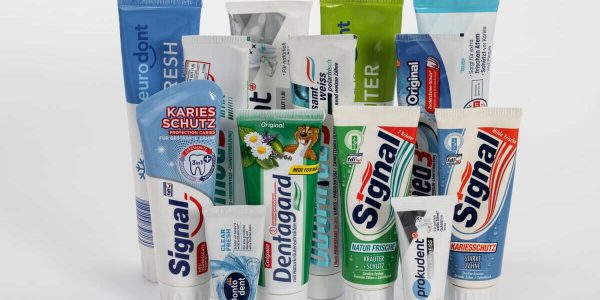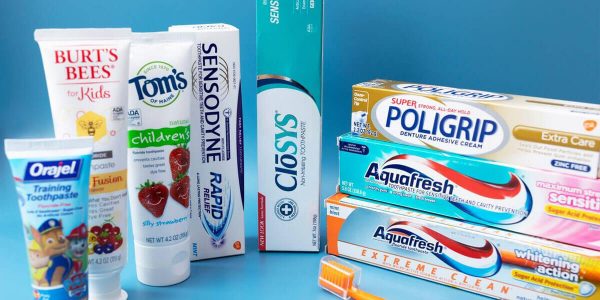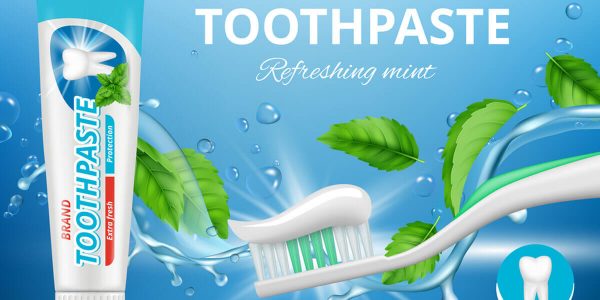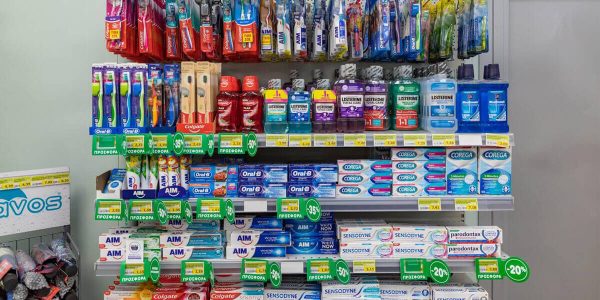- 01/01/2024
- Rohit Mishra
Toothpaste is a modern unsung hero, quietly ensuring every grin is a work of art. Selling toothpaste products is relatively simple for more established brands. However, the new toothpaste brand’s marketing landscape has grown from simple freshness promises to a symphony of methods that weave together science, creativity, and a touch of enchantment.

We’ll look at the tactics that make toothpaste more than a prosaic requirement, from historic brands that have endured the test of time to disruptive newcomers reshaping the oral care scene.
Understand Toothpaste Market – Key Steps Before Starting
Position your toothpaste product for success by researching market trends and identifying potential growth areas. So, in this blog portion, we’ll look at the toothpaste marketing plan in terms of market size, significant rivals, and trends.
1. Market Size & Growth Potential
Toothpaste is the most often used item; the global toothpaste market is massive. Toothpaste in India comes in various forms, including gel, pastes, and powder, each with unique properties for different oral ailments.

Many Indians still do not use toothpaste, and the industry is anticipated to expand further as income levels rise. You can also target the top 1% with natural and organic toothpaste products and those that address specific oral health conditions, such as illness and gum sensitivity.
2. Key Players & Competitors
Before creating a marketing strategy for toothpaste, you should learn about the critical players and competition in the global toothpaste market. Colgate, Pepsodent, Close Up, Crest, Dabur, and more brands are among them. These companies have earned a reputation for producing high-quality, creative toothpaste.

Many people call toothpaste Colgate. Examining your competition and determining where you can fit your business is critical, such as supplying customs or developing your toothpaste brand’s unique selling proposition.
3. Consumer Preferences & Trends
Missing trends can cost you money; if you don’t innovate to meet consumer preferences, someone else will. In the toothpaste business, consumer preferences and trends are constantly changing. You may position your toothpaste product to respond to these preferences and capitalize on rising trends by evaluating the marketing strategy of toothpaste and consumer insights.

For example, you may notice increased demand for toothpaste products free of dangerous chemicals and additives or natural components like charcoal or coconut oil.
Finally, understanding the toothpaste marketing plan is critical to developing a successful product that satisfies consumers’ wants and preferences. Position your product for success by evaluating toothpaste market trends, identifying potential growth areas, and differentiating your product from the competition.
Market Segmentation of Toothpaste Industry – Defining Your Target Audience
Determining your target market for toothpaste is critical when developing a successful toothpaste product. Once you’ve mastered the toothpaste industry, it’s time to delve deeper into the market segmentation of toothpaste & know who your ideal customer is.
1. Demographics & Psychographics
Begin your company research by defining your target audience, considering their demographic, age, gender, and income. This will make a good marketing plan for new toothpaste brand & develop your product and brand image easier. Another thing to consider is your target audience’s psychographics, which encompasses values, hobbies, and lifestyle.

By evaluating these aspects, you can gain a more sophisticated picture of your target demographic and what inspires them to buy toothpaste. This will help you to build a marketing strategy for toothpaste.
2. Identifying Niche Markets
A wise businessperson recognizes that they cannot satisfy 100% of the market; thus, select your niche market and design items to meet their wants as per your toothpaste marketing plan. While many toothpaste options are on the market, certain niche areas may need to be tapped.

By identifying this marketing strategy of toothpaste, you may build a toothpaste product that speaks directly to their needs and interests. Organic toothpaste is popular among the wealthiest 1% of the population.
3. Analyzing Consumer Pain Points
When establishing your target audience, you should also consider their pain areas. What are the issues that consumers have with toothpaste? You may build a toothpaste solution that solves consumer pain points like sensitivity, staining, and bad breath by understanding consumer pain points like sensitivity, staining, and foul breath.

This allows you to cater directly to the needs of your target audience and develop a highly attractive offering. Doing so can portray yourself as a business that genuinely cares about its clients’ requirements.
Determining your target demographic is a critical step in developing a successful toothpaste marketing plan. By examining demographics, psychographics, specialty markets, and consumer pain areas, you can build a marketing strategy for toothpaste that resonates with your ideal customers.
6 Marketing Strategy For Toothpaste
After you’ve defined your target demographic and discovered areas of opportunity, the next critical step of the marketing plan for new toothpaste brand is to develop a unique selling proposition (USP) that will set your toothpaste apart from the plethora of options on the market.
1. Unique Selling Proposition (USP)

Your USP is the beating heart of your toothpaste’s identity, distinguishing it from competitors. Defining your product’s specific advantage or value gives buyers a compelling incentive to choose it.
Your USP should be prominent, whether toothpaste touts natural components or treats sensitivity issues. Position your toothpaste as a healthier, eco-friendly option for ecologically aware consumers if made with all-natural ingredients.
2. Branding & Packaging

Creating a distinctive brand identity and visually appealing packaging is essential for developing a tremendous go-to-market strategy of toothpaste. Consider your target audience’s values and preferences when developing your marketing strategy for toothpaste brand.
Green and blue colours represent nature and wellness and are ideal for health-conscious people. For individuals who value convenience, utilize eye-catching packaging that sticks out on shelves.
3. Price & Value Proposition

The price of your toothpaste must be carefully balanced between value and affordability. Position your product as a high-value choice with distinct benefits to justify a higher price point. Maintain your competitiveness by offering affordable pricing to your target audience as per your toothpaste marketing plan.
If your toothpaste is a premium, all-natural choice, you may be able to charge a higher price, but if your target audience is budget-conscious, consider promotions or discounts.
4. Location-Based Targeting

Location-based targeting is critical; you should tailor your ad campaigns to your target audience’s location. Learn from industry giants like Colgate, which specializes in location-based marketing strategy for toothpaste.
For example, they used targeted advertisements efficiently during the Kumbh Mela, Hindu devotees’ most significant spiritual gathering. Such tactics can generate favourable replies and lead.
5. Collaboration With Influencers

It would help if you began cooperating with influencers for a marketing plan for new toothpaste brand based on your budget; for a modest budget, you might start with Youtubers and Instagram influencers.
For example, Colgate’s collaborations with renowned celebrities such as Ranveer Singh for Colgate Max Fresh and others such as Kareena Kapoor, Shahrukh Khan, and Madhuri Dixit have proven incredibly effective. The company’s collaboration with YouTubers broadens its access to millions of millennials.
6. Building Trust Among Customers

Colgate’s success stems from more than just supplying high-quality, low-cost products. The corporation has been actively involved in numerous social issues, collaborating with non-governmental organizations and sharing heartwarming stories. This fosters trust and helps contribute to one of the most effective marketing strategy of toothpaste branding in the Indian industry.
Finally, a robust marketing approach will only enhance your fantastic product. Use these toothpaste marketing plans to increase your sales to your target audience.
Distribution Channels For Toothpaste Marketing Plan
Production and marketing are crucial, but the most critical aspect of every firm is order fulfilment. You can begin your distribution channels by following the marketing strategy for toothpaste listed below.
1. Traditional Retail Outlets
Engaging traditional retail locations such as grocery and drug stores is a common way for customers to obtain toothpaste products. Securing prominent shelf space and designing attractive in-store displays can boost sales and brand visibility.

It is critical to tailor your toothpaste product to the demographics of the store’s customers. For example, selecting establishments that cater to a younger customer would be advantageous if your target audience is more youthful.
In traditional shops with multiple toothpaste options, competition is crucial. Use eye-catching packaging, distinctive flavours, or ingredients to stand apart. Implementing a toothpaste marketing plan & efforts highlighting your product’s benefits can help it stand out.
2. E-Commerce & Online Marketplaces
The rise of e-commerce and online marketplaces has made digital channels crucial for toothpaste product distribution. Establishing a solid online presence, particularly on platforms like Amazon, broadens your reach and opens up new sales channels.

On the other hand, selling online poses unique obstacles, such as creating attractive toothpaste product descriptions and photos to entice buyers to make online purchases.
Online sales provide the advantage of collecting vital client data, which aids in identifying your target population and developing more successful marketing strategy for toothpaste. Furthermore, internet channels allow options for promotions and discounts, which contribute to more significant sales and client loyalty.
3. Direct-to-consumer (DTC) Approach
Choosing a direct-to-consumer (DTC) marketing strategy of toothpaste entails developing a website and selling your products directly to consumers. This toothpaste marketing plan eliminates intermediaries, allowing higher profit margins and greater control over branding and messaging. Creating a direct link between the product and the consumer can boost brand loyalty.
On the other hand, a DTC marketing strategy for toothpaste necessitates significant effort in developing a user-friendly website and a frictionless shopping experience. Increasing website traffic and enticing customers to buy toothpaste without the advantages of in-store displays provide additional hurdles. A DTC strategy’s efficacy depends on carefully analyzing your target audience, budget limits, and general marketing objectives.
Finally, the best distribution channels for your toothpaste product are determined by thoroughly studying your target market for toothpaste, financial constraints, and overall marketing objectives. Evaluating and combining these distribution marketing strategy for toothpaste wisely helps increase your product’s market penetration and overall success.
Conclusion
Ultimately, building a successful toothpaste marketing plan will require market and targeted audience research, as well as effective distribution & marketing strategy of toothpaste. Above all, keep up with innovation and trends for a long-term future. It will be challenging, but it will also be rewarding and profitable.




